MiGs, Stars & Magic Books: A Brief History of Trespassing in Moscow
An illustrated guide to urban exploration in the Russian capital.

1 December 2015
Prague has to be one of the most magical cities in the world: its gothic cathedral and gold-topped spires; the astronomical clock that peers over Old Town Square through indecipherable dials. It’s a city renowned for jazz and synagogues, strong beer and marionettes… a heritage so colourfully defined – so Bohemian – one might almost forget that Prague spent 41 years as the capital of an oppressive communist regime.
Unlike the other capitals of former socialist republics though, here in Prague the physical legacy of communism is almost conspicuous in its absence. While cities such as Moscow, Warsaw, Bucharest or Sofia are dominated still by the architecture – the concrete, marble and steel – of their socialist past, the Czech capital maintains, even after all that time, a reputation not for grey totalitarian spaces so much as rare medieval splendour.
That’s not to say, however, that Prague was left untouched by its four decades of communist rule.
On previous visits to Prague I’ve seen the castle and the bookshops, the bridges, churches, cemeteries and towers for which it’s so well known – I visited the home of Franz Kafka and went hunting for the legendary golem. This last time though, I wanted to try experiencing a different aspect of the capital; and so I took to the streets, looking for physical memories of a communist Prague.

The Communist Party of Czechoslovakia (KSČ) was founded in 1921, taking its cue from the revolutionary developments in Russia. Even in the early days, they had a sizeable membership – gaining almost a million votes in the 1925 parliamentary election. The party was banned from 1938–1945, when the Nazis occupied Czechoslovakia; but with the arrival of the liberating Red Army they rose again, taking their place in a post-war coalition government.
 With the results of the 1946 elections, the KSČ became the largest party in government and its secretary general, Klement Gottwald, stepped up as prime minister of Czechoslovakia. They continued to grow. Within two more years the KSČ was the largest communist organisation in Europe, outside of the USSR – with two million members. They organised a packed-out rally in Prague that year and in February 1948, they seized full, single-party power over the government with a coup d’état that effectively abolished democracy.
With the results of the 1946 elections, the KSČ became the largest party in government and its secretary general, Klement Gottwald, stepped up as prime minister of Czechoslovakia. They continued to grow. Within two more years the KSČ was the largest communist organisation in Europe, outside of the USSR – with two million members. They organised a packed-out rally in Prague that year and in February 1948, they seized full, single-party power over the government with a coup d’état that effectively abolished democracy.
What came next was a rapid move towards Stalinisation. Politics, education, industrialisation and agriculture in Czechoslovakia would all be restructured to better fit the model exemplified by the Soviet Union. The currency was devalued, rendering savings worthless and thereby levelling the financial playing field.
Obedience to the new regime was enforced with an almost theatrical judicial system. Show trials were organised in Prague throughout the 1950s, some of the largest public trials in Eastern Europe; almost a quarter of a million citizens would be convicted on charges ranging from treason and conspiracy against the Party, to the spreading of alarming news.
These trials were often staged from start to finish. Defendants, after a painful process of coercion, would stand in the dock and read from a script… praising the justice of the system before being carted off either to the gulags or the gallows.
The Party’s notorious secret police force would serve a crucial role in establishing this new climate of fear.
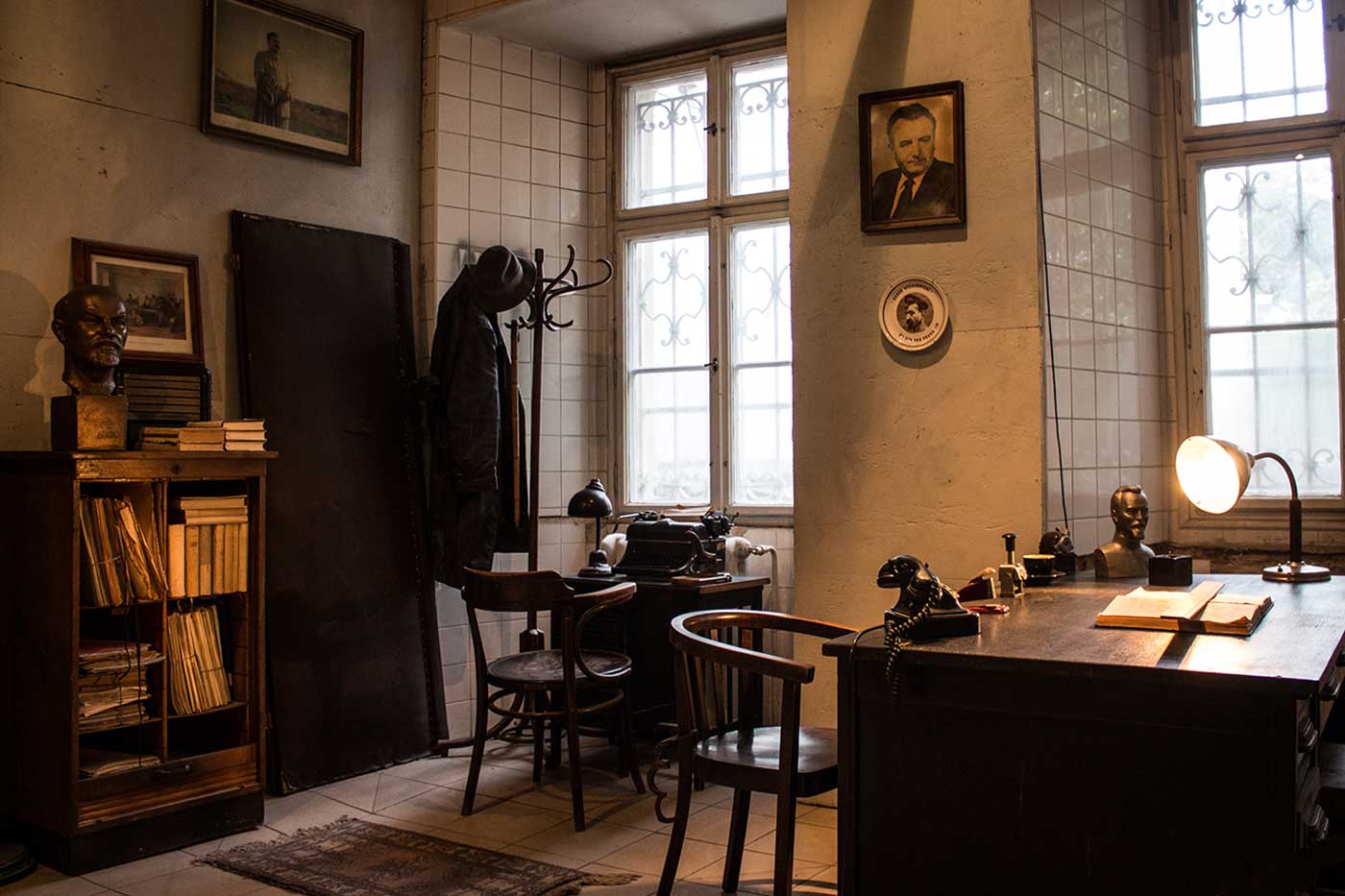
The Czechoslovak State Security department, or ‘StB,’ was created in 1945. Its role was simple – to uphold the spirit of Marxism-Leninism by dealing out punishment to those suspected of harbouring anti-communist sentiments.

They used fear and violence to defend the communist dream; quashing uprisings, managing the press and eliminating political opposition.
In practice this involved invasive surveillance techniques – spying and tapping phone lines – forgery and framings, blackmail, illegal searches, kidnapping, torture and a regular schedule of executions. Their practice of turning citizens against one another would contribute to a growing sense of unease in the nation.
The StB was dismantled in 1990, and its members were banned from returning to positions of power and influence. Nevertheless, there have been concerns that some of its top agents have found their way back into senior roles in Czech society – the police force, its government and some of its most powerful businesses.
Somewhat ironic then, that the former StB headquarters in Prague are now the city’s police headquarters.
Bartolomějská Ulice was named for the Church of Saint Bartholomew, which has stood on this street since the early 18th century. That church, along with the adjacent convent and gardens, was built by Jesuits; later it would be taken over by the Congregation of Grey Sisters of St. Francis. At one point in the 19th century there were a thousand nuns living in the convent, many of them involved in charitable work around the city’s hospitals and missions.
The StB commandeered these premises in 1950. The nuns were removed to a detention camp, as a whole block of buildings along Bartolomějská Ulice was converted for use by the state security service. Convent cells became interrogation chambers overnight.

Walking down Bartolomějská Ulice now, the place seems pleasant enough. The buildings on either side of the narrow street tower high over the pavements, seeming to lean into the curve of the road. The convent, now returned to the nuns, has opened some of its rooms for guests. There are cafés and bars, no different to those you’d find elsewhere in the Old Town area.
At Number 4, the former StB HQ building, a sign beside the door announces Prague’s contemporary police force. Above the level of the street meanwhile, a series of small figures – Stalinist renditions of workers and soldiers – pose like socialist gargoyles gathering dust.
In communist Czechoslovakia, there were restrictive rules governing the creation of art and architecture. The lavish, imperialist and religious styles so typical to Prague would become a thing of the past. Functionalism, too, was deemed too Western an approach; but rather Czechoslovakia was to inherit the USSR’s preferred socialist-realist and Stalinist classical styles.
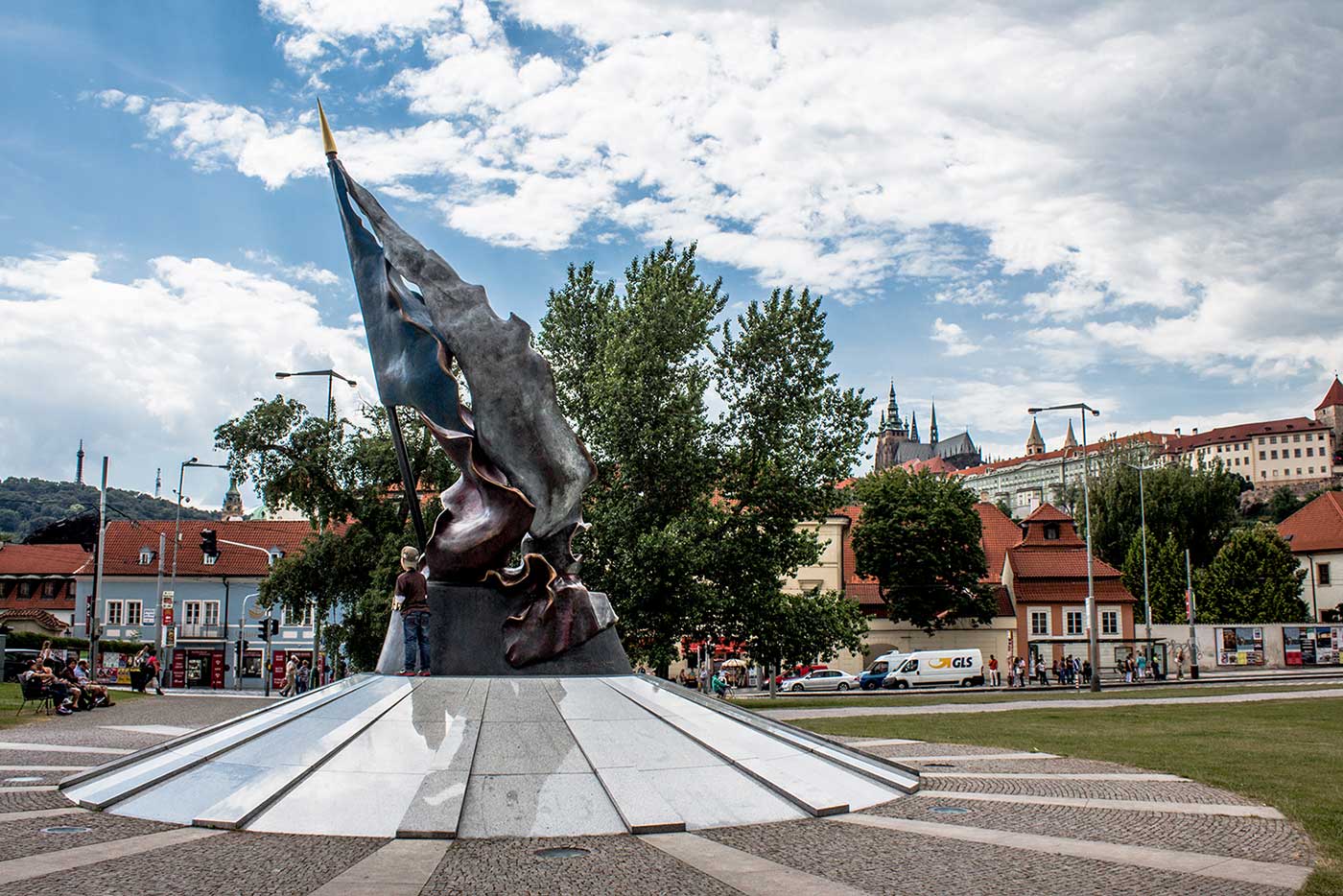
Stalinist architecture was a movement towards grand, impersonal public spaces and broad streets fit for military parades – though while other Eastern Bloc capitals were subjected to major redevelopments, Prague was largely spared these projects. There were plans for new developments near the river, behind Parizska Street, for example; though the historical value of the pre-existing buildings ultimately saved them from demolition.
In terms of monumentation though, Prague’s architects would sacrifice individualism and expression for the Soviet socialist model of Art for the People; simple, clean forms that illustrated unambiguous support for state ideology.
On May 1st 1955 – International Workers’ Day – at a site just north of the river in Letná Park, the communist party unveiled the grandest of all Prague’s socialist-realist monuments: a granite colossus depicting Josef Stalin and his retinue.
The dictator’s likeness gazed down from his plateau in the park, straight into the very heart of the Czechoslovak capital. It didn’t take long for locals to derisively nickname it ‘the queue for meat.’

Measuring 15.5m in height and 22m in length, it was the largest statue of Stalin ever built; and the largest group statue anywhere in Europe. The structure weighed a total of 17,000 tonnes and cost the city a small fortune to create.
Stalin’s Monument took more than five and a half years to construct – although in what was perhaps a foreshadowing of the structure’s own fate, the sculptor, Otakar Švec, committed suicide the day before the grand unveiling. Stalin himself would likewise miss the ceremony, which had been planned to commemorate his 70th birthday.
Josef Stalin died in 1953… and at the 20th Congress of the Communist Party of the Soviet Union in 1956 a new first secretary, Nikita Khrushchev, denounced his predecessor’s political purges and maniacal rule. A process of aggressive de-Stalinisation would follow, sweeping right across the Eastern Bloc.

In Prague, the Stalinist titan standing watch over the city would quickly become a national embarrassment; and in 1962, it was brought down with 800kg of explosives. That year another monument to Stalin – on Parizska Street – was similarly destroyed.
This period brought with it new possibilities for architecture in Prague. No longer was Czechoslovakia subject to Stalin’s artistic limitations, but instead they were suddenly able to experiment with all kinds of world architecture. In 1958, the Czechoslovak Pavilion at the Brussels EXPO was awarded the prize for best pavilion in the contest.
Some Czech and Slovak architects returned to the lavish styles of the pre-war years – others looked forward into postmodernism and futurist styles; the Federal Assembly Building, the Kotva Department Store and the Intercontinental Hotel on Parizska Street (pictured below) survive today as relics of the latter school of thought.

 I passed the Intercontinental Hotel as I headed over the Svatopluk Čech Bridge and up into Letná Park, on my way to visit the empty perch of the disgraced dictator. On the north side of the Vltava River, a path zigzagged up the hillside to a beer garden on the plateau. This had once been Stalin’s view: all of Prague at his feet, a medieval city beneath his boot heels. I stopped for a beer and enjoyed the panorama, before heading to the site of the former monument.
I passed the Intercontinental Hotel as I headed over the Svatopluk Čech Bridge and up into Letná Park, on my way to visit the empty perch of the disgraced dictator. On the north side of the Vltava River, a path zigzagged up the hillside to a beer garden on the plateau. This had once been Stalin’s view: all of Prague at his feet, a medieval city beneath his boot heels. I stopped for a beer and enjoyed the panorama, before heading to the site of the former monument.
After the fall of communism, it didn’t take long for the plinth in Letná Park to be repurposed. In 1990, Radio Stalin – a pirate station – began operating from a bomb shelter beneath the empty platform. Those same bunkers would be reopened later that decade as Prague’s first rock club. Later, in 1996 the plinth was briefly occupied by an 11m statue of Michael Jackson, to advertise his European tour.
Now the place is a thriving hangout for Prague’s youth: skateboards and graffiti, couples sat embracing on concrete balustrades. A 23m metronome rises from the marble plinth, a kinetic sculpture installed in 1991. Designed by Vratislav Novák, the long arm marks the time and symbolises the slow road out of communism towards an unknown future.
With its marble steps and banks, curved edges and concrete blocks, this so-called Stalin Square has become a popular destination amongst the international skateboarding community. Many of the shoes that dangle from the wire above have supposedly been left there as mementos, by skaters visiting from all around the world.
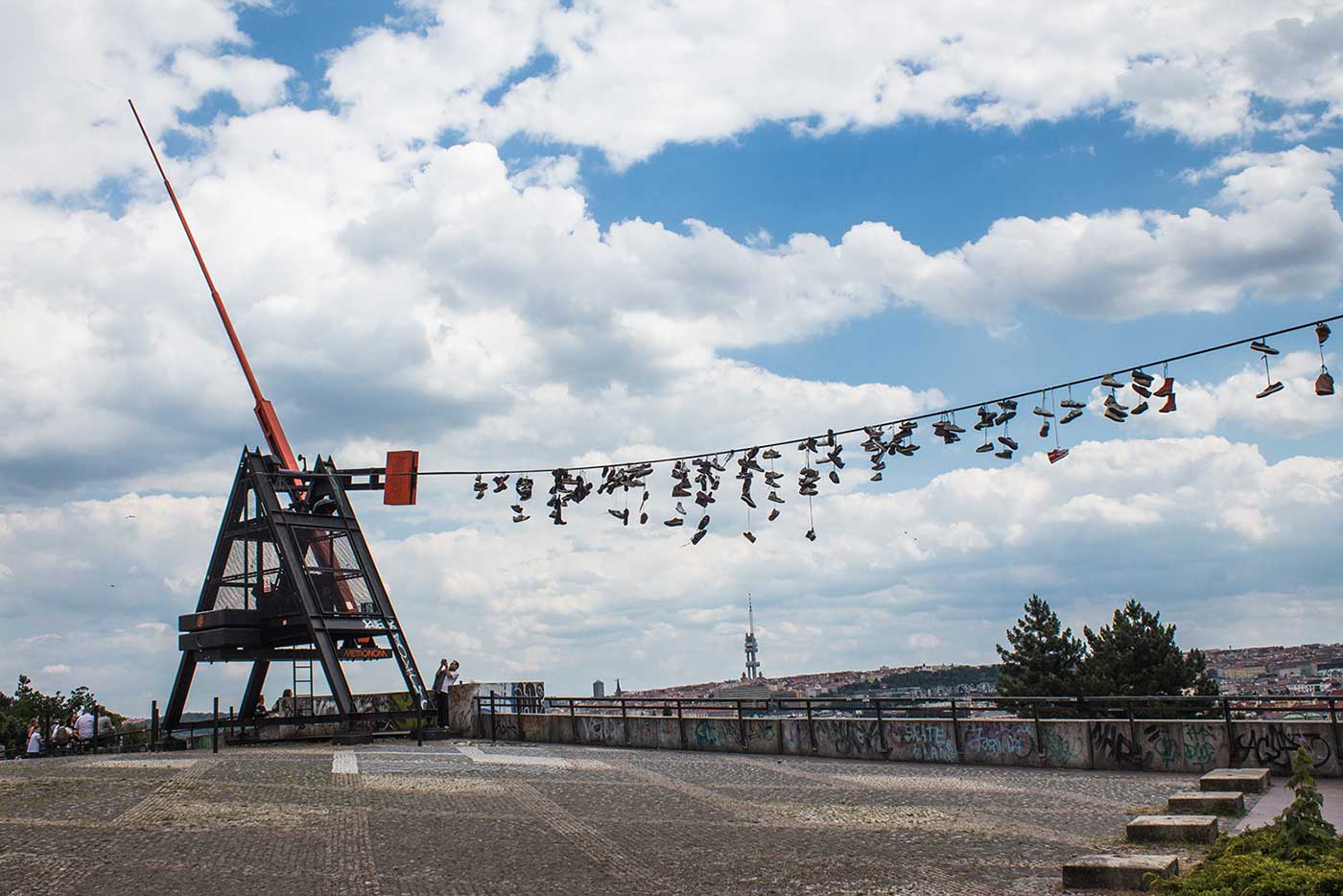
Watching them pull off stunts in the shadow of the sculpture, grinding and scraping around the monumental square, I found the act deliciously disrespectful to Stalin’s memory. Perhaps that’s part of the draw… but then again, the good beer and panoramic views of the city can’t hurt either.
By the late 1960s the Czechoslovak economy was in decline, and a tide of dissatisfaction led to the forced resignation of First Secretary Antonín Novotný. In his place, in 1968, came Alexander Dubček.
Dubček sought to reform Czechoslovakia, beginning with the Party itself. He called for ‘socialism with a human face,’ while introducing measures of liberalisation to the constitution. State media censorship was abolished, as elements of a market economy were introduced to buoy up the sinking planned economy. Citizens were given greater freedoms, including the right to travel abroad.
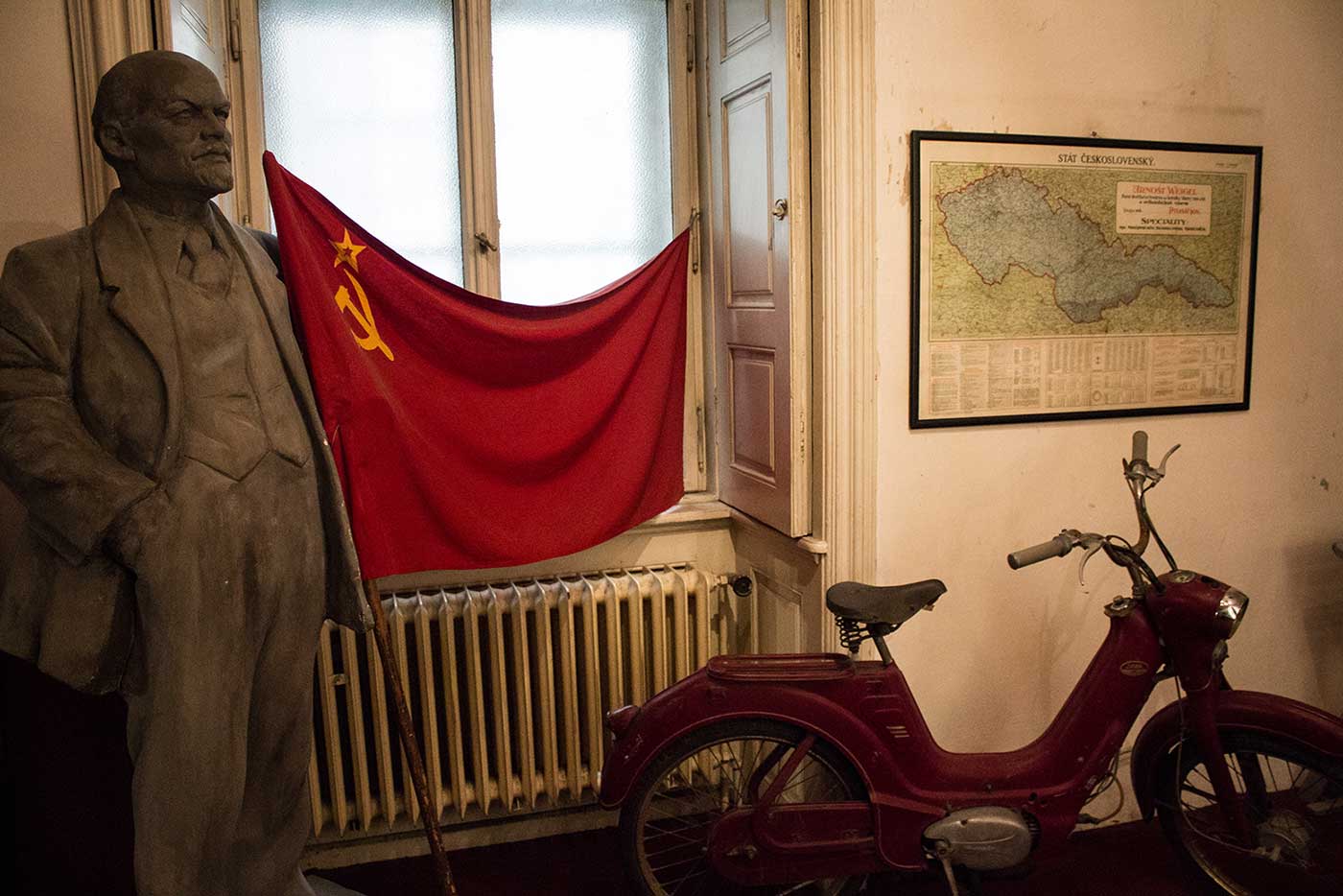
This period of reforms would become known as the Prague Spring, and as the year went on the nation veered dangerously close to democratisation. The Party loosened its control over the people, and in turn, diminished Moscow’s influence in Czechoslovakia.
On August 20th 1968, Moscow responded.
When the tanks first rolled into Prague, some people assumed it was an American invasion; such was the influence Soviet propaganda had maintained over the Czechoslovak worldview. In reality, Soviet First Secretary Brezhnev had ordered a full-scale invasion of Czechoslovakia by half a million troops from Warsaw Pact nations. Operation Danube was launched with the intention of ‘defending socialism against Dubček’s counter-revolution’; and these Soviet-led forces occupied Prague whilst Dubček himself was arrested and sent back to Moscow.
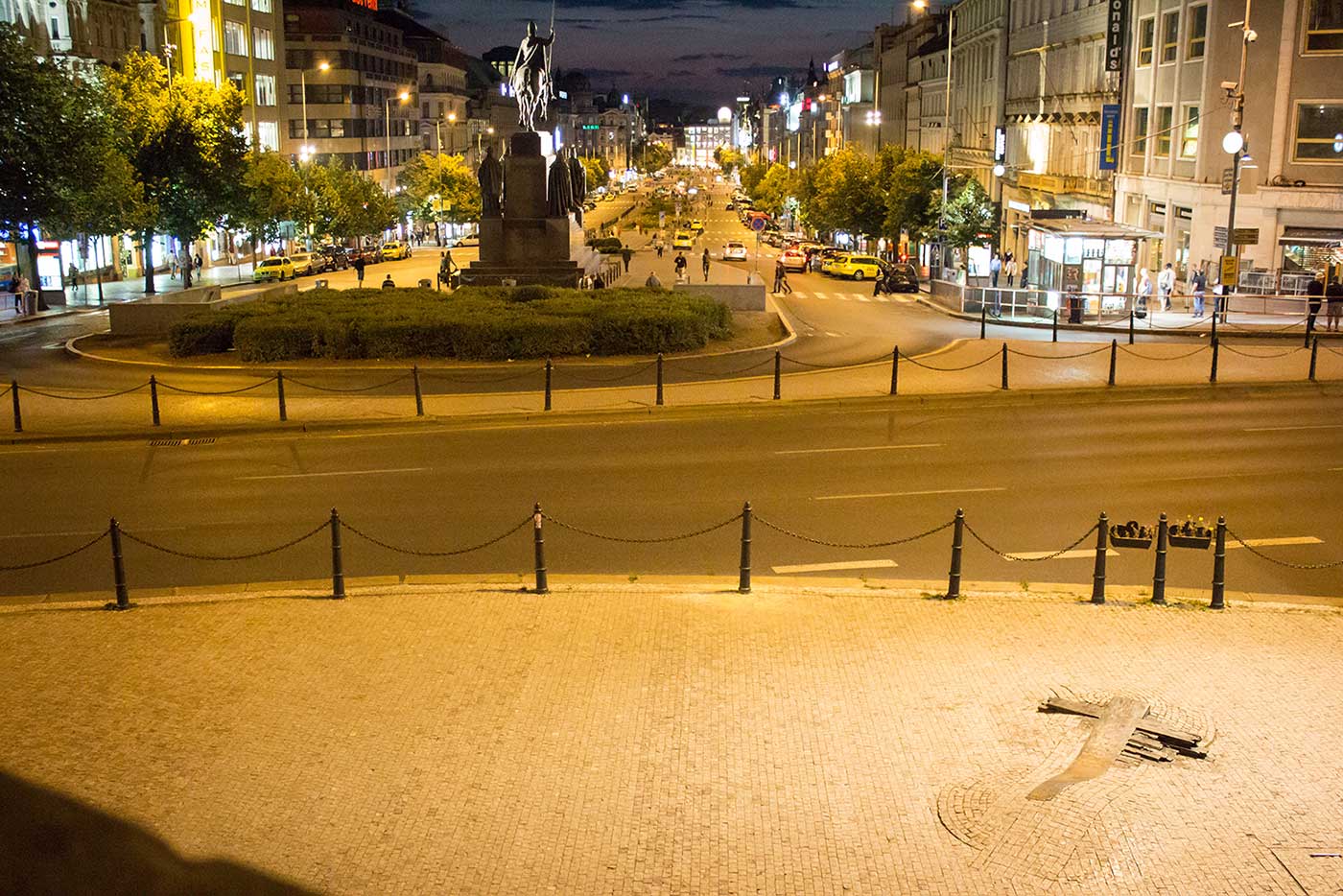
Much of the Czech and Slovak populations protested the occupation – putting up a non-violent resistance that delayed the full transfer of power by eight months. Although the Soviets would eventually seize complete control of Czechoslovakia, during those months of resistance the rebels were able to rally around the figure of an unlikely martyr.
In January 1969 Jan Palach set himself alight in an act of protest. News of his sacrifice spread around the world, drawing global attention to the nation’s struggle against Soviet oppression. Palach’s funeral was broadcast worldwide and a week after his death, Pope Paul VI offered the statement: “We can uphold the values that put self-sacrifice above others to the supreme test, but we cannot approve the tragic form taken on behalf of their aims.”
Palach’s grave at Olšany Cemetery became a shrine, and was visited by many – until the StB, fearing the ideological potential of an anti-communist martyr, exhumed and cremated Jan Palach’s body. It didn’t work, though; and at a memorial ceremony to Palach another student, Jan Zajíc, followed suit with another act of self-immolation.

Years later, a memorial was laid to the sacrifice made by Palach and Zajíc. A bronze cross was embedded into the flagstones outside Prague’s national museum, at the elevated end of Wenceslas Square. It’s easy to miss – easier, probably, to trip over if you didn’t know it was there. The cross is dwarfed by the equine statue of St. Wenceslas; eclipsed by the colourful light from shops that line either side of the wide boulevard. Instead of standing tall, its minimalist modesty forms part of the fabric of the street itself, upon which all these others things are built… and in that at least, there seems a poignant sentiment.
In one of his books, the Slovenian social theorist Slavoj Žižek recalls a joke that became popular in Czechoslovakia after the Prague Spring of 1968. Here’s how it goes:
 A Czech man meets a fairy, who promises to grant him three wishes. The man makes his first wish: “The Chinese Army should occupy our country for a month, and then withdraw.”
A Czech man meets a fairy, who promises to grant him three wishes. The man makes his first wish: “The Chinese Army should occupy our country for a month, and then withdraw.”
When prompted for his second wish, the man repeats the instruction. “I want the Chinese Army to occupy our country once again, and then withdraw.” The third wish, exactly the same thing.
The fairy is a little confused by the man’s wishes, and so she asks him why he’d want his country to suffer such a fate; and three times over, at that.
“Because each time the Chinese occupy us,” the Czech man replies, “they would have to pass through the Soviet Union and back to get here.”
The joke inadvertently tells us much about the mentality in Czechoslovakia at that time. For a start, it hints at the pain and disruption caused even by a (mostly) bloodless occupation – something which outsiders might otherwise take for granted, when looking solely at death statistics related to the event.
More than that though, the man’s willingness to suffer foreign invasion for the promise of dealing equal damage to his enemy shows a vindictive nature that seems wholly at odds with the Czech national character before (and after) communism; but it resonates with criticisms of the regime made by many who lived through it. The KSČ and StB, by building a police surveillance state, stoking paranoia and turning neighbour against neighbour, created conditions wherein such cynical vindictiveness might thrive.
In the years that followed the Prague Spring, cynicism and paranoia prevailed. Half a million people lost their jobs in a matter of months as a new first secretary, Gustáv Husák, began the reversal of Dubček’s reforms; and the KSČ was purged of all those members who had previously backed policies of liberalism. This period of clamping down on freedoms and bringing Czechoslovakia back in line with the restrictive, Soviet model would become known as ‘Normalisation.’
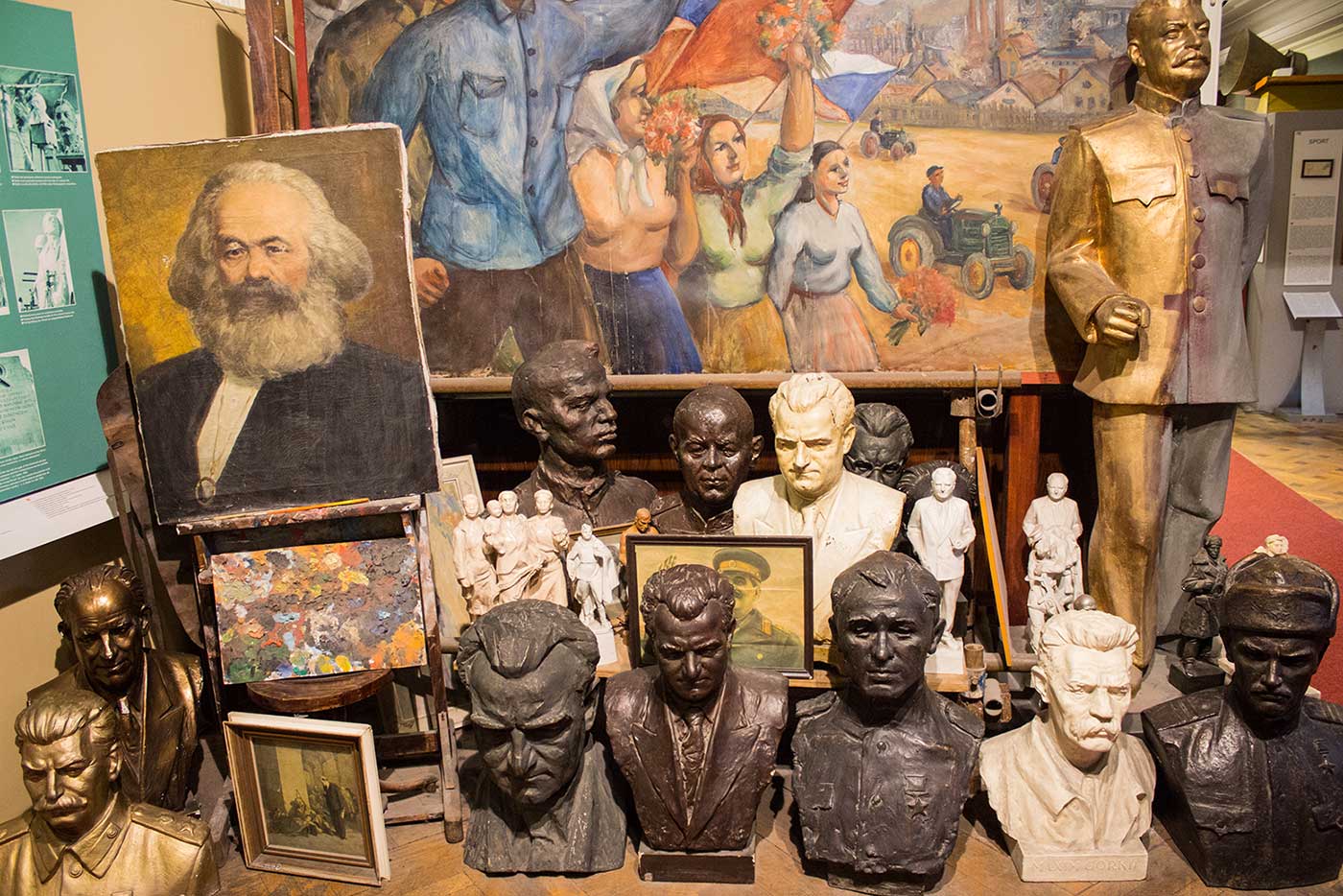
In terms of architecture, the years of Normalisation were marked by a return to rigid conformity. A new wave of high-rise apartment blocks formed from prefabricated concrete panels – ‘panelaks’ – were erected in the suburbs. The Prague Metro was also a product of this era: and when the first of its three lines was opened in May 1974, it was believed that this new public transport system would serve as a powerful advert for communist urban efficiency.
Much like the metro systems in other socialist republics (my visit to Pyongyang Metro in North Korea springs to mind), here in Prague the stations were given names that evoked the ideological buzzwords of Marxism-Leninism.
Today’s ‘Dejvická’ station on Line A had originally been titled ‘Leninova’ after V.I. Lenin himself. There were stations named Youth (‘Mládežnická’), Friendship (‘Družby’), Builders (‘Budovatelů’) and Cosmonaut (‘Kosmonautů’) – themes which then featured as popular station, street and district names right across the Eastern Bloc.

Other stations made references more specific to the Czechoslovak brand of communism. There was ‘Švermova,’ named for the editor-in-chief of a 1930s communist newspaper in Prague; the planned ‘Zápotockého’ station that referenced Czechoslovakia’s second communist president, Antonín Zápotocký; and today’s ‘Vyšehrad’ station, once named ‘Gottwaldova’ after the Party’s first president, Klement Gottwald.
The metro also allowed for cultural exchange with Soviet allies. In Prague, Soviet architects designed the ‘Moskevská’ station – while Czech architects were sent to work on the ‘Prazhskaya’ station for the Moscow network. By 1990 and the transition to democracy however, a dozen stations on the Prague Metro were renamed for somewhat less political titles.
One of the most iconic buildings to emerge from this final wave of communist construction was the Žižkov Television Tower.
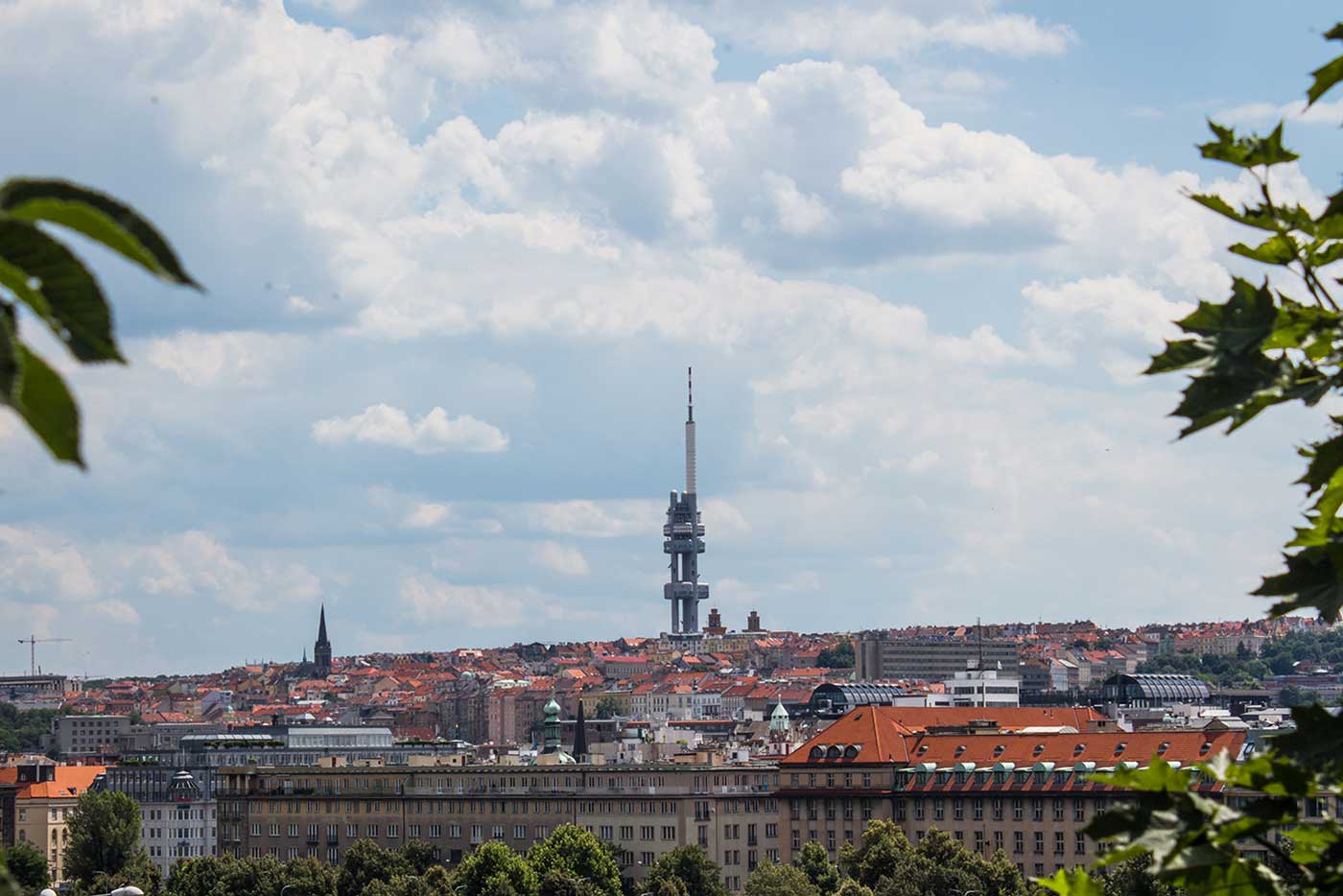
 The tower was started during the final decade of communism – although it wouldn’t be completed until 1992, well after the Velvet Revolution. It’s an odd addition to the famous city skyline: a futuristic monument to technology, rising out of the historic Žižkov district.
The tower was started during the final decade of communism – although it wouldn’t be completed until 1992, well after the Velvet Revolution. It’s an odd addition to the famous city skyline: a futuristic monument to technology, rising out of the historic Žižkov district.
That district itself is lucky to survive – the steep, cobblestone streets of Žižkov were almost bulldozed in the late communist period to make room for more efficient new apartment buildings. It’s a small mercy that the revolution came when it did, and put a stop to these high-rise ambitions.
The tower itself rises to a height of 216m, composed of three steel columns supporting a series of space-age pods and transmitter decks. For a long time it was resented by local inhabitants, its size and imposing form seeming typical of megalomaniacal communist architecture. In the decades that followed however, opinions have softened. The addition of bizarre decorative sculptures in 2000 – crawling babies making their way up and down the tower – perhaps adding a little extra character to the structure.
These days the Žižkov Tower serves a range of technical and touristic functions. The old analogue broadcasting gear has been removed, replaced with a colocation datacentre; while the tower’s pods now feature a café, observation decks, a gourmet restaurant and a one-room luxury hotel suite.

During the period of Normalisation, dissent was forced underground. Artists, musicians and filmmakers would be arrested when they ventured too close to sensitive subjects. There remained an undercurrent of resistance however, which found its physical expression most clearly marked at the site of Prague’s ‘Lennon Wall.’
Up until the 1980s, this wall on the west bank of the Vltava River was exactly that: a regular wall. But as the Bohemian spirit began to rise once again in rebellion against Normalisation, the wall became a canvas for anti-communist rhetoric.
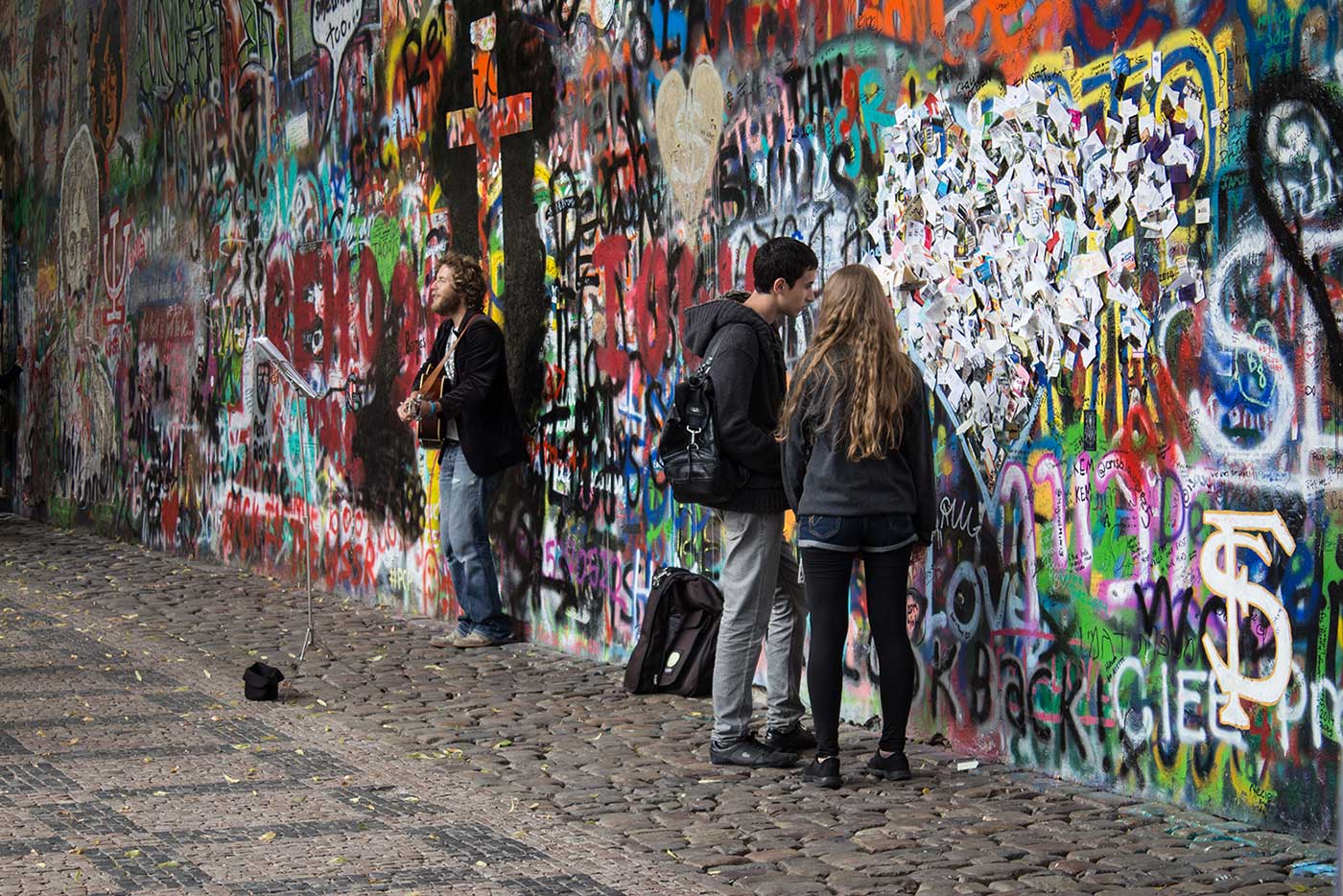
At first, it largely took the form of John Lennon quotes about peace, and lyrics lifted from songs by the Beatles. Over time it grew though – more graffiti appeared to denounce Czechoslovak communism, and the site became increasingly problematic for the regime. The government of Gustáv Husák denounced these young ‘Lennonists’ as sociopaths, alcoholics and agents of Western capitalism. In 1988 it all came to head, as security police clashed with hundreds of Czech students near the wall. A year later, the dissidents would end up winning and the wall remains today as a popular forum for political counter-commentary.
The original portrait of John Lennon has been lost beneath accumulated layers of paint, but in its place appear flowers and crosses, poetry calling for peace and love around the world. In recent years, the Lennon Wall has been painted with messages for Israel and the Middle East, for Ukraine, and in support of the rioters in Hong Kong. Buskers perform songs along the pavement while new visitors share their messages to the world in an ever-changing tapestry of kindness.
It all came to an end in 1989. The Berlin Wall came down and in Prague, the people took to the streets in non-violent demonstration, calling for change. By the 20th November there were half a million protestors in the streets of the capital, and four days later the leaders of the Communist Party of Czechoslovakia resigned all at once.

Over the following months the single-party system was dismantled, the constitution was rewritten and by the next summer Czechoslovakia held its first democratic election in 44 years. Terms such as ‘Gentle’ or ‘Velvet Revolution’ were coined, to describe the largely peaceful process by which the nation effected its transition to democracy.

Twelve years later – once the dust had settled – the ‘Memorial to the Victims of Communism’ was unveiled. Created by the sculptor Olbram Zoubek and architects Jan Kerel and Zdeněk Holzel, the piece stood at the foot of Petřín Hill and illustrated the suffering of Czechoslovakia during its years of communism.
I walked to Petřín Hill from the centre, crossing the famous Charles Bridge where jazz musicians busk beneath austere statues of saints and angels; then south through the Lesser Quarter, past baroque churches and weaving through medieval courtyards.
The memorial stands between the forested hill and the city streets. It features seven bronze figures, their bodies and limbs seeming to decompose, to fall away as they recede into the distance; a powerful image, and one that manages to convey a great deal through a relatively simple concept. A plaque installed beside the monument reads: “The memorial to the victims of communism is dedicated to all victims – not only those who were jailed or executed but also those whose lives were ruined by totalitarian despotism.”

Down the centre of the steps, meanwhile, a bronze strip is engraved with numbers – estimates for the number of people whose lives were negatively impacted by the Communist Party of Czechoslovakia. It lists, as follows:
205,486 arrested
170,938 forced into exile
4,500 died in prison
327 shot trying to escape
248 executed
While the memorial has been criticised by some (branded as too kitsch, or accused of offering a gender biased representation) I nevertheless felt that it was effective in its purpose. Unfortunately though, the Memorial to the Victims of Communism would not be permitted the last word on the matter.
Inevitably, while exploring the legacy of communism in Prague it wouldn’t be long before I found myself at the Prague Museum of Communism. I had already seen posters advertising the place, plastered all around the city. These adverts showed a range of different images: a Russian matryoshka doll with wolf-like fangs; a bear with a Kalashnikov. The general theme seemed to read, Communism is evil and Russia is not to be trusted.
A dubious start, but nevertheless I decided to go and take a look.
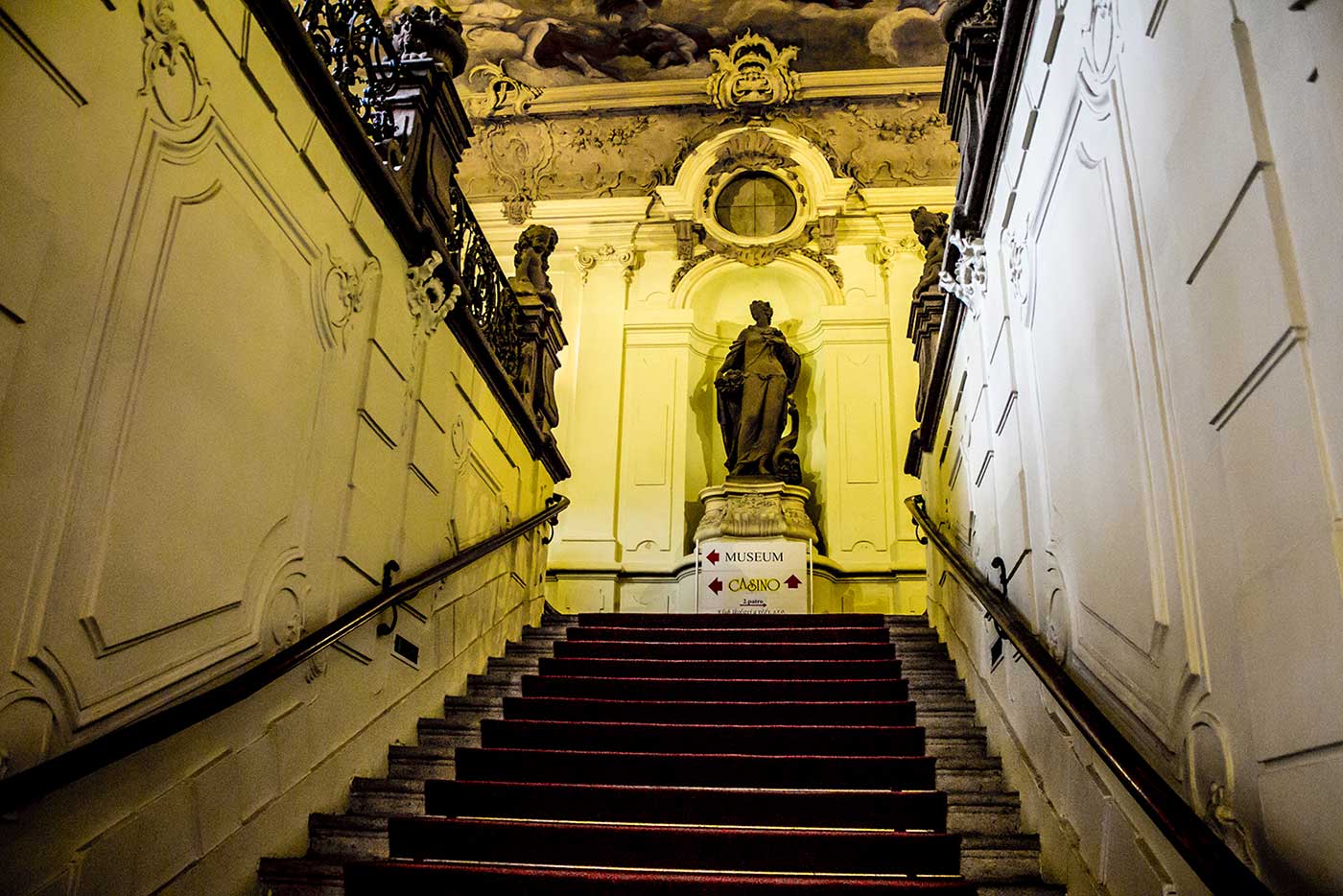
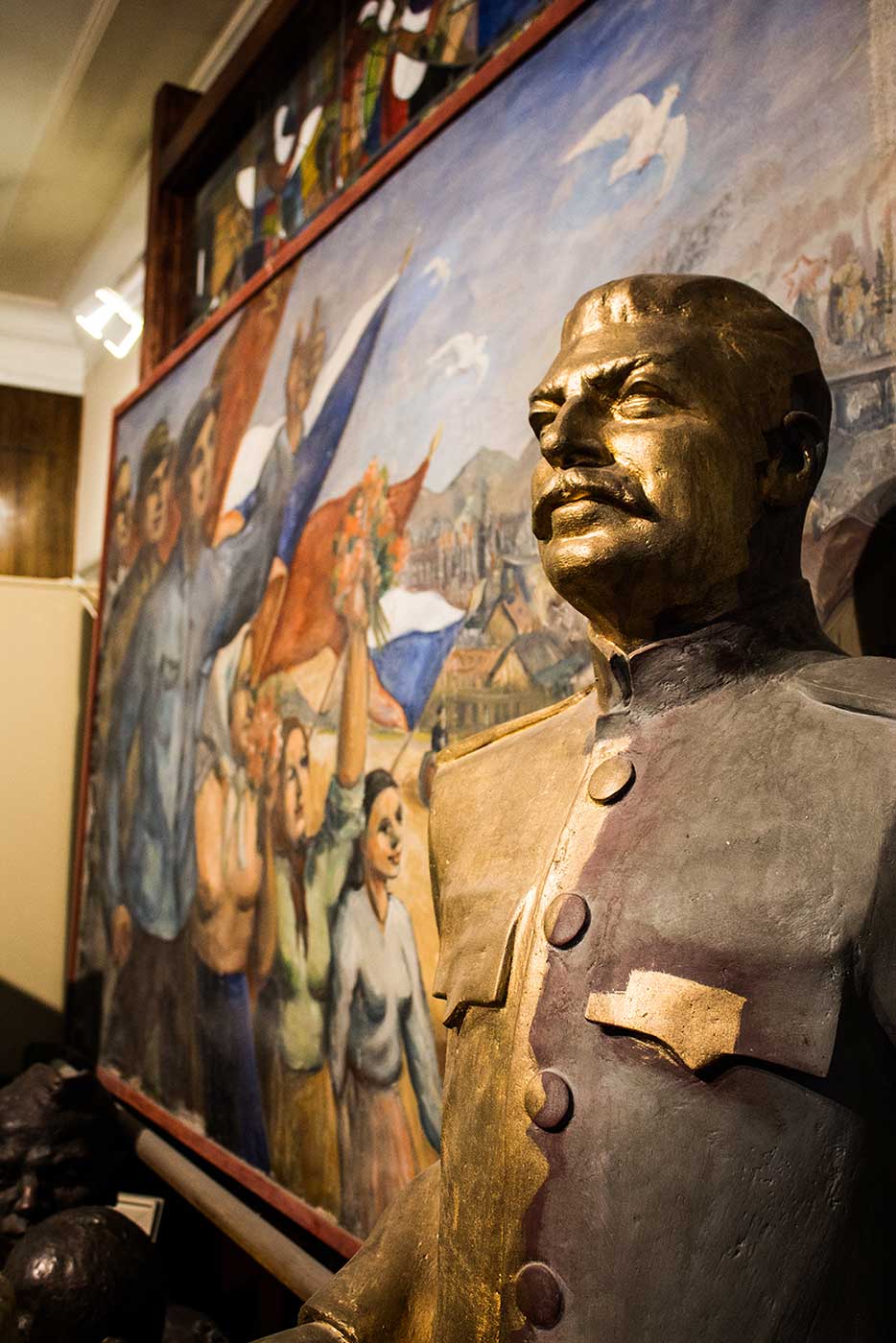 The place lay just near Wenceslas Square; on the upper floor of an 18th century palace, sandwiched between McDonald’s and a casino. It almost felt ironic, that setting… until I passed up the regal staircase and turned a corner, to find myself confronted by a wall of Lenin t-shirts inside the museum’s ample gift shop. This place was as much a shrine to capitalism, I soon realised, as the fast food joint next door.
The place lay just near Wenceslas Square; on the upper floor of an 18th century palace, sandwiched between McDonald’s and a casino. It almost felt ironic, that setting… until I passed up the regal staircase and turned a corner, to find myself confronted by a wall of Lenin t-shirts inside the museum’s ample gift shop. This place was as much a shrine to capitalism, I soon realised, as the fast food joint next door.
The museum offers an immersive look at what it calls, “Communism – the Dream, the Reality, and the Nightmare.”
As far as the Dream is concerned, there are brief sections on Marx, and a few thoughts on why communism might have appealed during the first half of the 20th century. Most of the museum however, is dedicated to the other two-thirds of the tagline: to the Reality and the Nightmare.
Although the museum isn’t large, it uses that space quite efficiently – cubicle walls forming a series of exhibitions and displays. Near the entrance there’s a schoolroom; dusty books and wooden desks, the blackboard filled with Cyrillic text in neat calligraphy. Around the corner, a replica shop appears with glass counter, basic fittings and near-empty shelves stocked only with a small selection of tins. There’s a mock-up of an StB interrogation room as well: all buzzing alarms, dark wood panelling and busts of politicians.

Nearby, a wooden telephone box with no phone inside appears to suggest some kind of commentary on freedom of speech… or perhaps I was reading too much into it.
What the museum does well, is to recreate scenes visitors might otherwise have only read about; I’d already filled myself with information about the StB by this point, but it’s a different thing to revisit those stories while standing in an imitation cell.
There was something that troubled me though, about the way the information was presented. Every fact was served with an adjective; all details were emotive. The regime was never simply “the regime,” but always seemed to be “the oppressive regime” or “the despotic regime”; Stalin’s Monument was referred to as “an eyesore at Letna Park.” After thirty minutes in the museum, I got tired of being told what to think… and therein lay the problem. What the museum was attempting to do was denounce propagandists using propaganda.
When I stumbled across a side exhibition on North Korea, I knew that I had to leave. The small display quoted some of the more sensationalist common misconceptions about the place: real tabloid journalism, things that would sound laughable to anyone who’s actually been there.

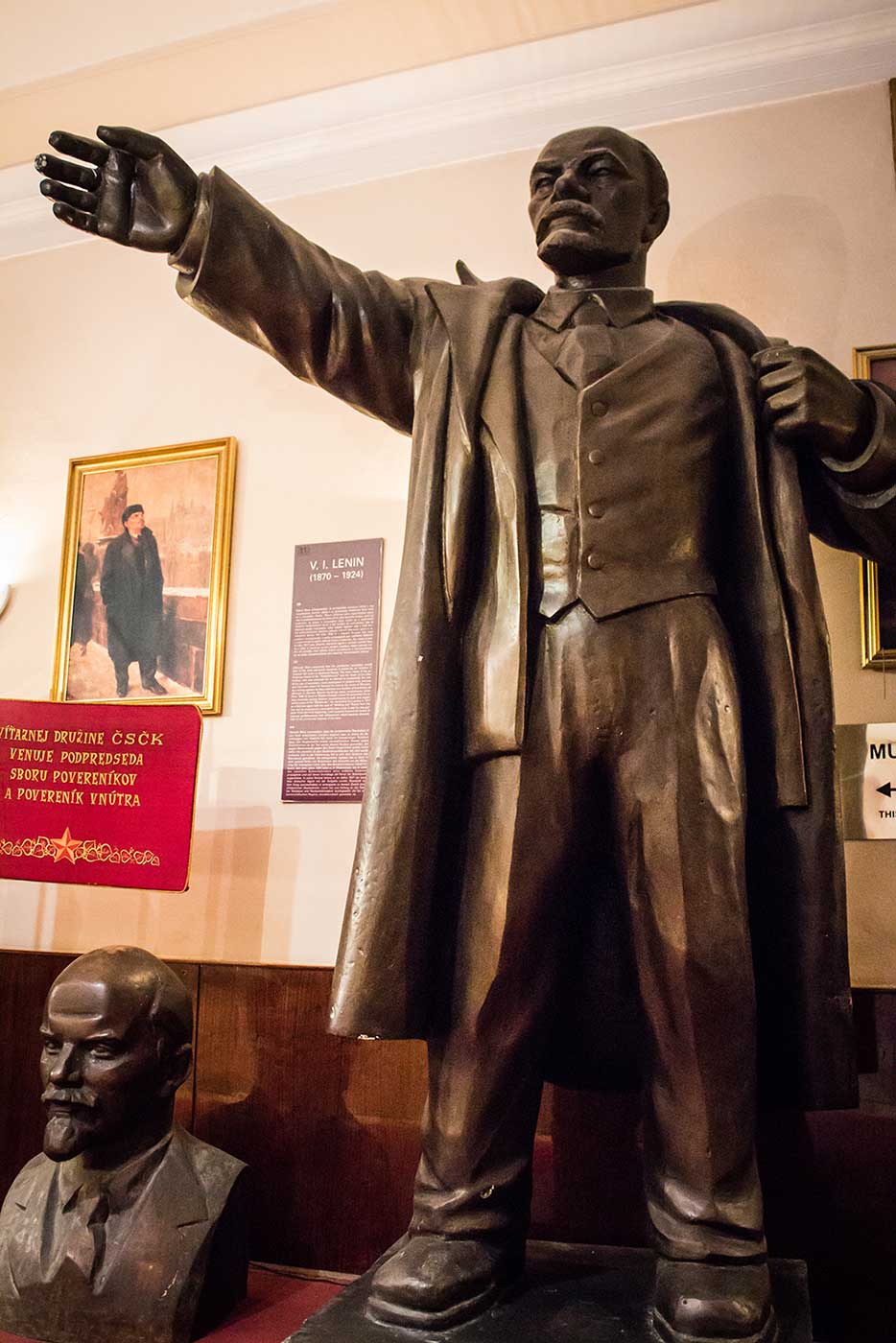 The Museum of Communism, I later learned, was opened in 2001 by a US businessman named Glenn Spicker. Arriving in Prague shortly after the fall of communism, Spicker was amongst the first wave of foreign capitalists to invest in the former Eastern Bloc – soon establishing himself with a chain of bagel shops, restaurants and bars around the Czech capital. Many of the museum’s artefacts he collected himself, by raiding the city’s markets and antique shops.
The Museum of Communism, I later learned, was opened in 2001 by a US businessman named Glenn Spicker. Arriving in Prague shortly after the fall of communism, Spicker was amongst the first wave of foreign capitalists to invest in the former Eastern Bloc – soon establishing himself with a chain of bagel shops, restaurants and bars around the Czech capital. Many of the museum’s artefacts he collected himself, by raiding the city’s markets and antique shops.
As a private collection, it’s fairly impressive – I could hardly deny it that, after I’ve used so many photos of its exhibits to illustrate this article – but to call it a ‘museum’ would be inaccurate. A museum should educate, not dictate, and I found myself deeply frustrated by the way the collection shut down important discussion of a serious subject.
The theme running throughout this collection seemed to be: Communism was pure evil and everyone here hated it; but the thing is, that simply isn’t true. A STEM poll published in January 2013 found that 33% of Czechs claimed to prefer the former communist regime to their contemporary government. That’s a huge portion of the population to marginalise with rote-learned Cold War rhetoric imported from the other side of the Atlantic.
From interviewing Bulgarian villagers about ideological monuments, while researching for my book on the subject… to partying with Cuban communists or discussing politics over a beer with North Koreans: some of the most fascinating insights I’ve ever gleaned about life under communism have come from people who believed in it. That’s not to say they won me over – they didn’t – but rather that it’s impossible to understand the popularity of the movement until you first recognise your own indoctrinated bias, and put it to one side. Spicker’s collection taught me nothing I couldn’t have got from 30 minutes spent on Wikipedia… but even that was tainted by the polarising prejudice of ill-informed Western imperialism.
As far as I’m concerned, Prague doesn’t have a Museum of Communism as of yet; though if it ever opens one, I may be back. For now at least its streets continue to serve that purpose.
The scars of Czechoslovak communism are not etched so deep or bold as those in other cities… some have been healed, paved over, others renamed or blown apart with dynamite. What survives here, for the most part, are not the victims – but rather the victors of communism. Art on the empty thrones of fallen dictators, memorials to students who stood in the path of tanks; and the buildings themselves, the architectural heritage of Prague that refused to give way to another nation’s vision of urban utopia.

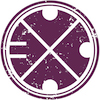



An illustrated guide to urban exploration in the Russian capital.

Poltergeists, ritual murder & a live-in succubus – the 1000-year-old pub with a ghostly reputation

A month-long monument hunt, and what I learned along the way.
COMMENT